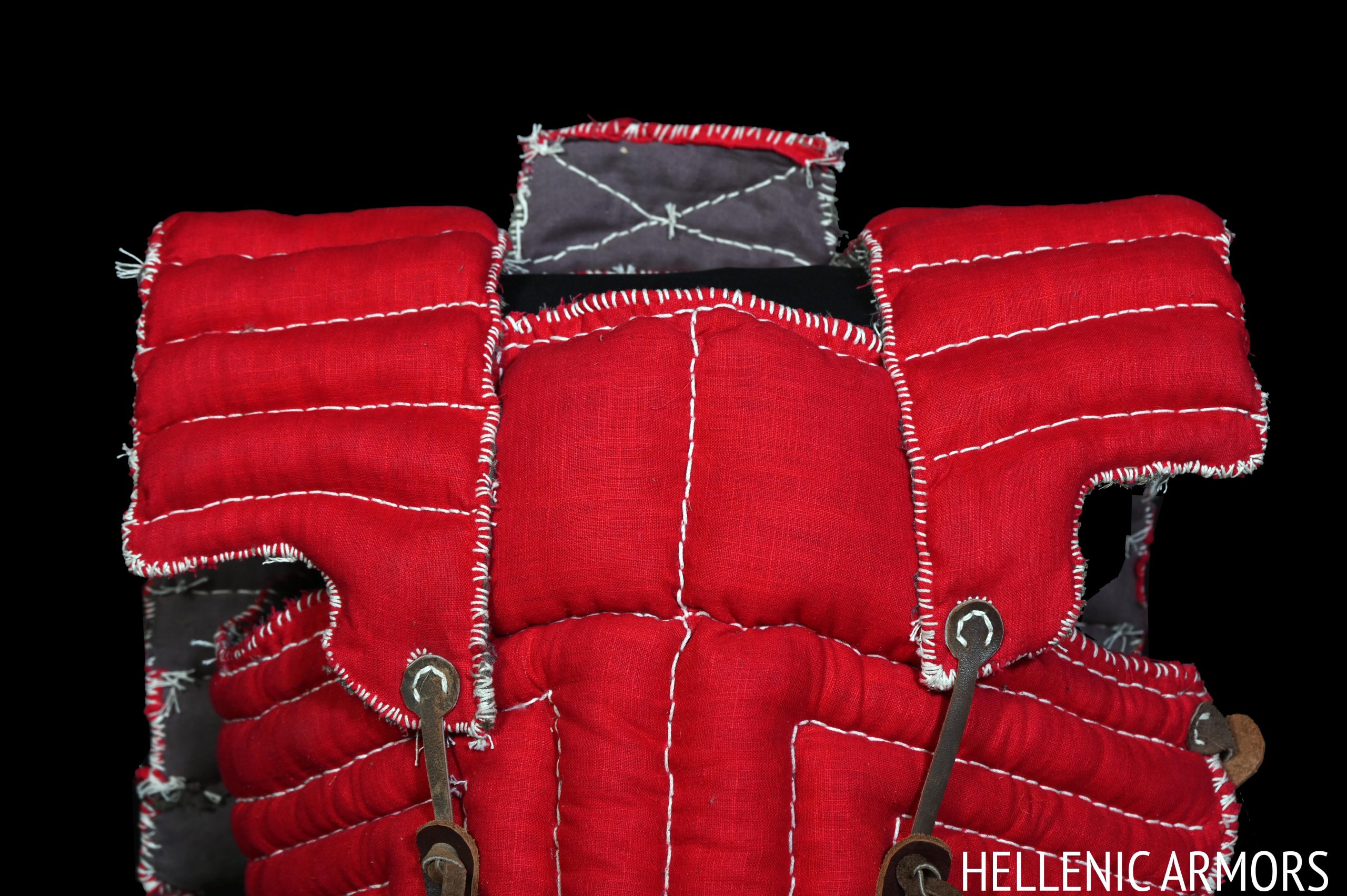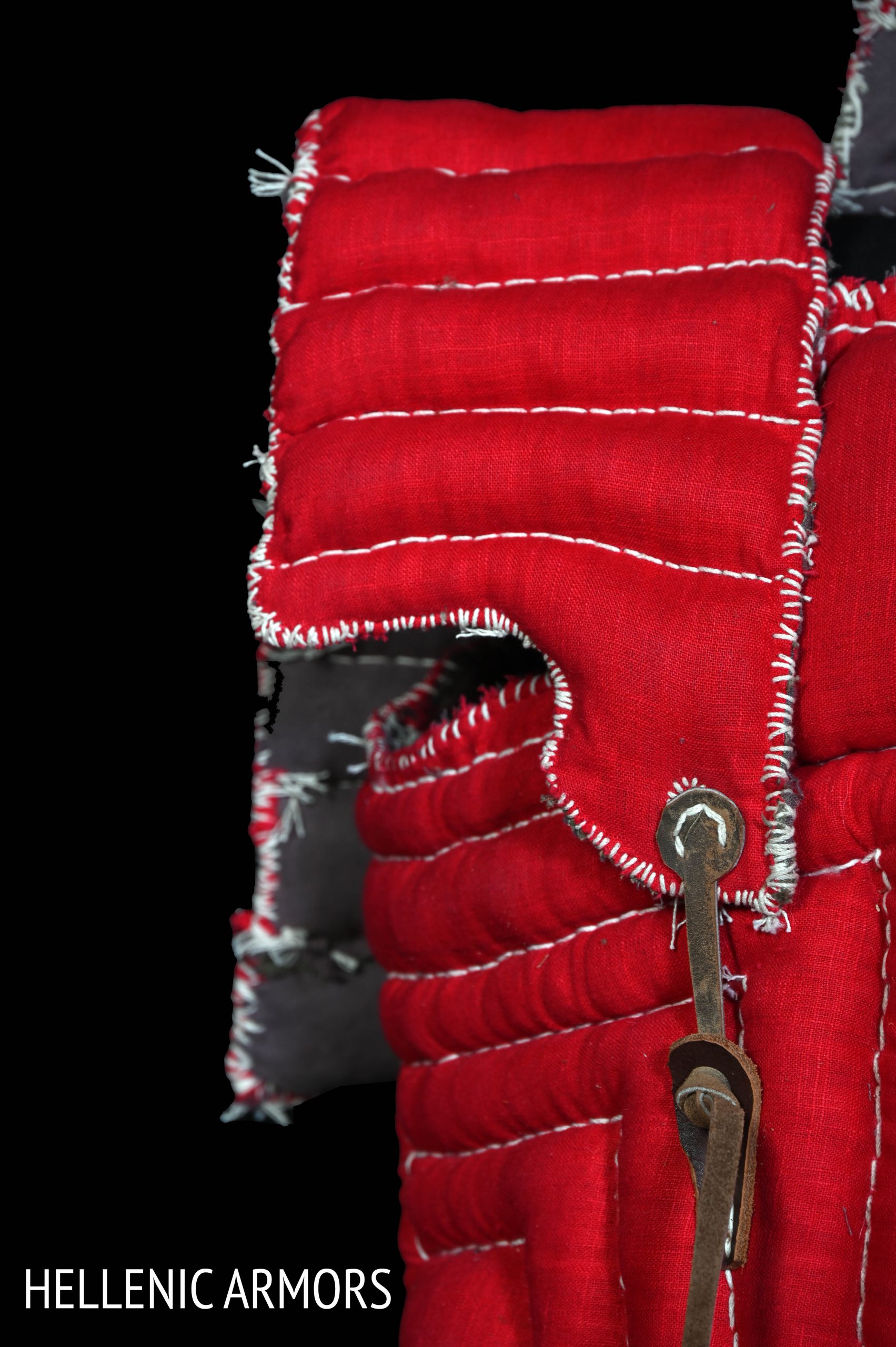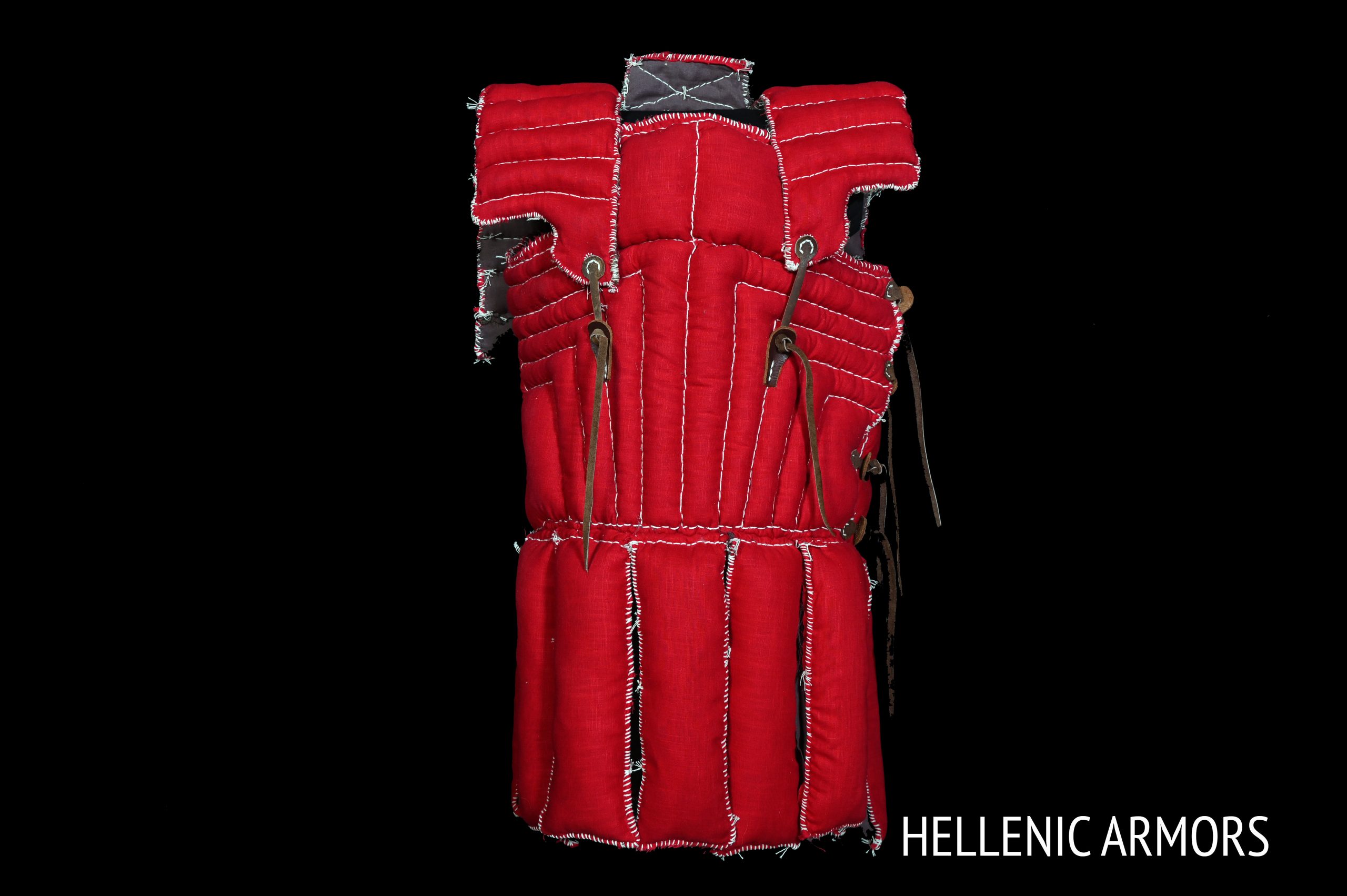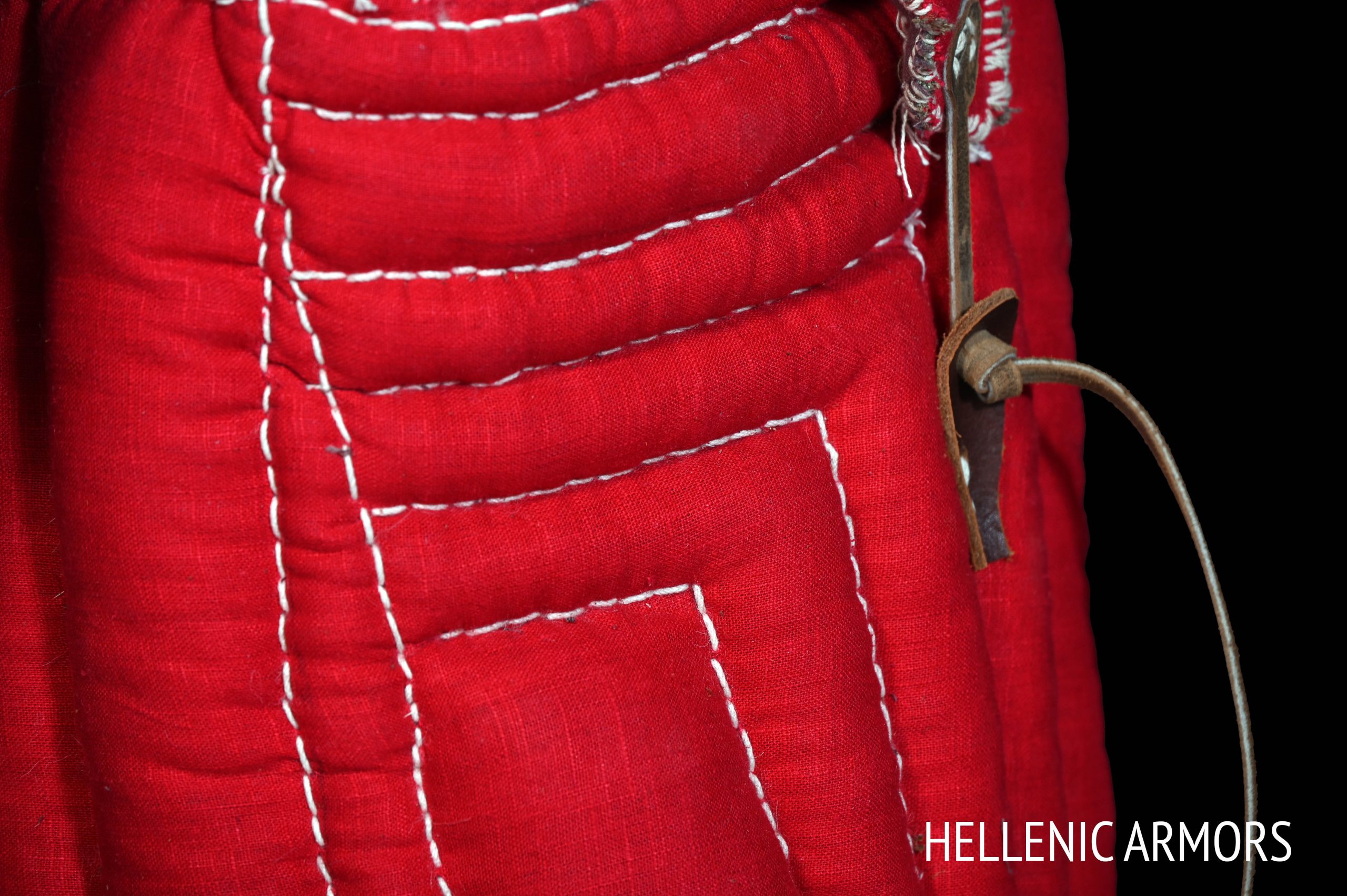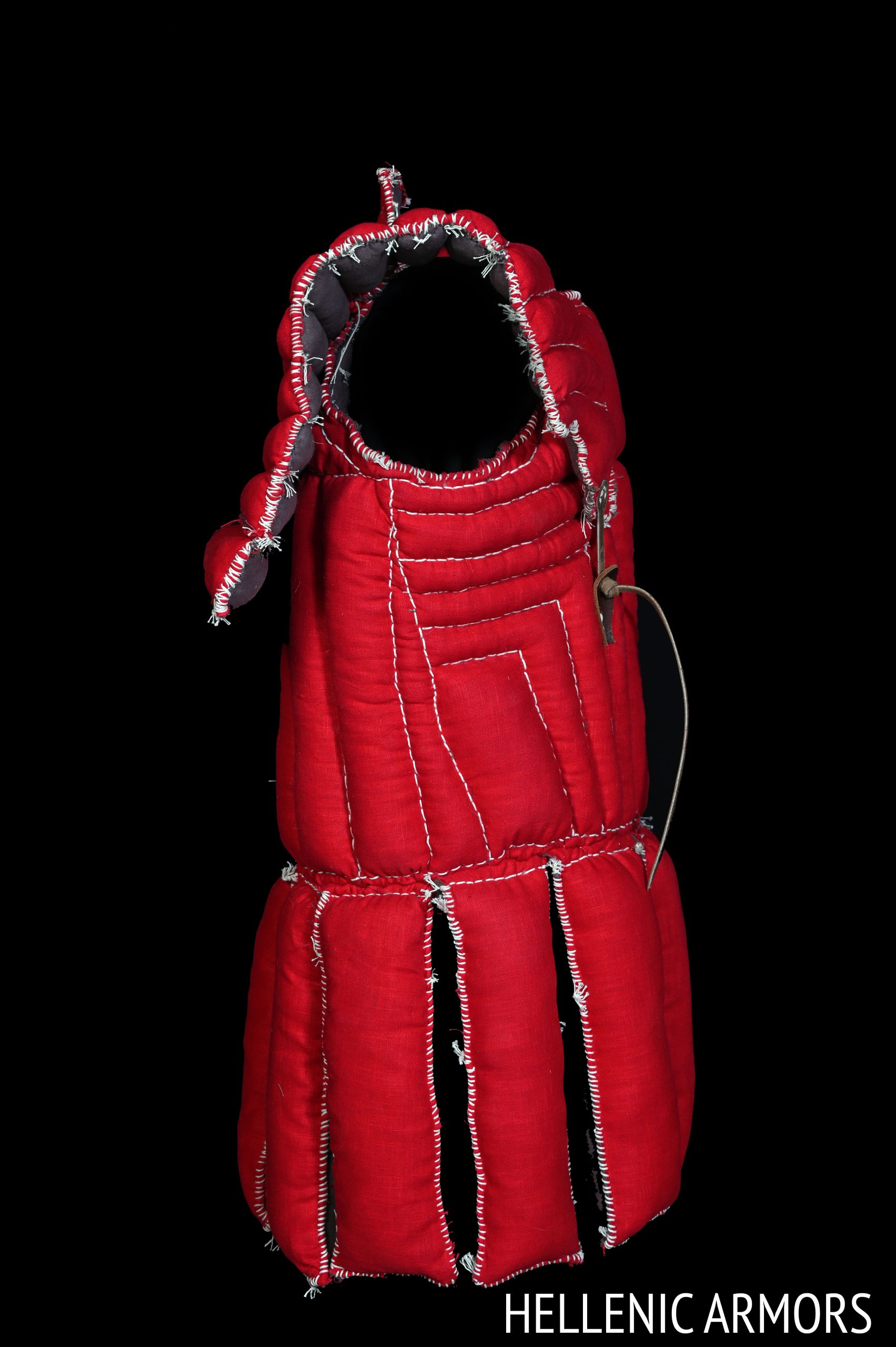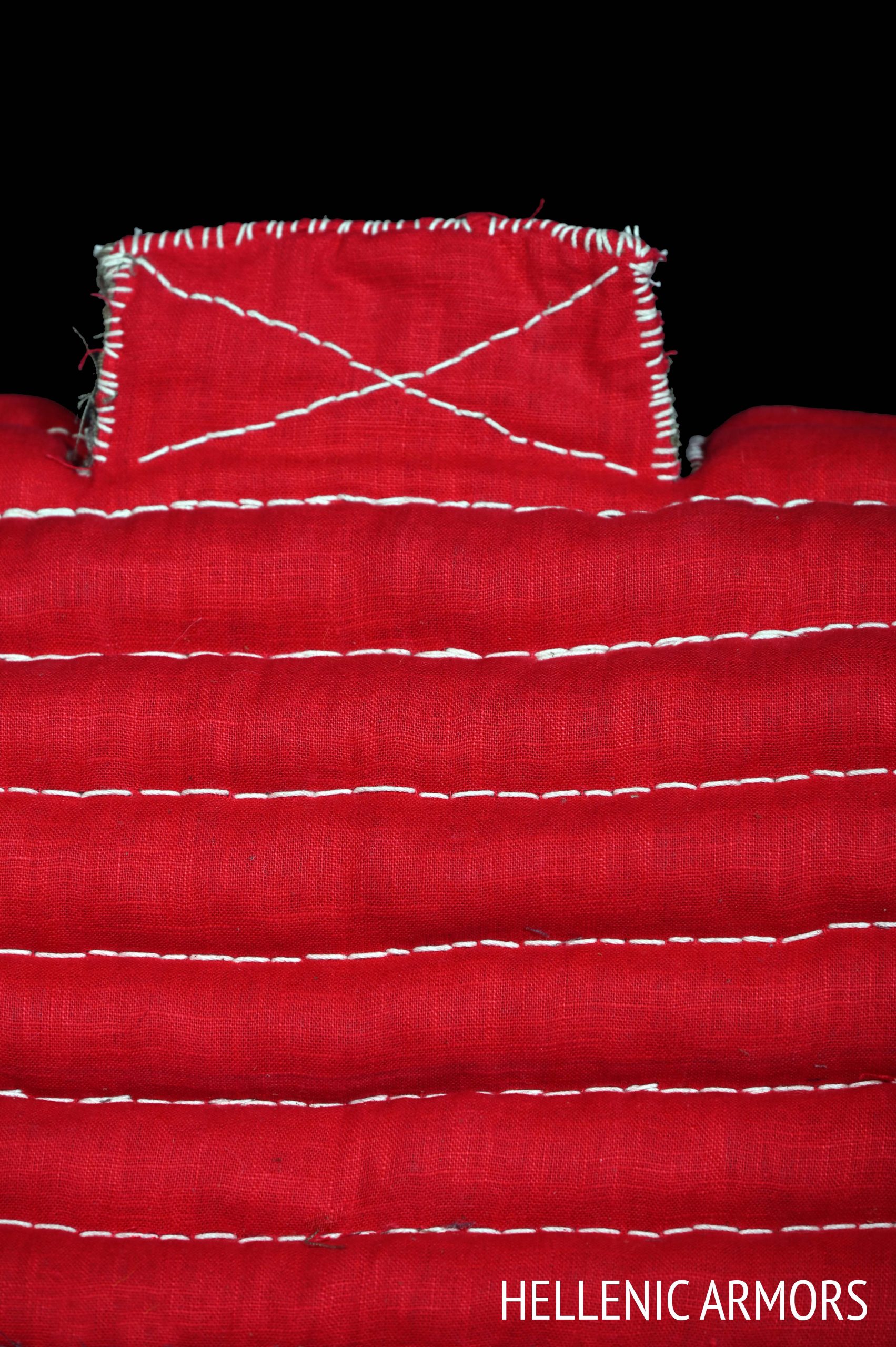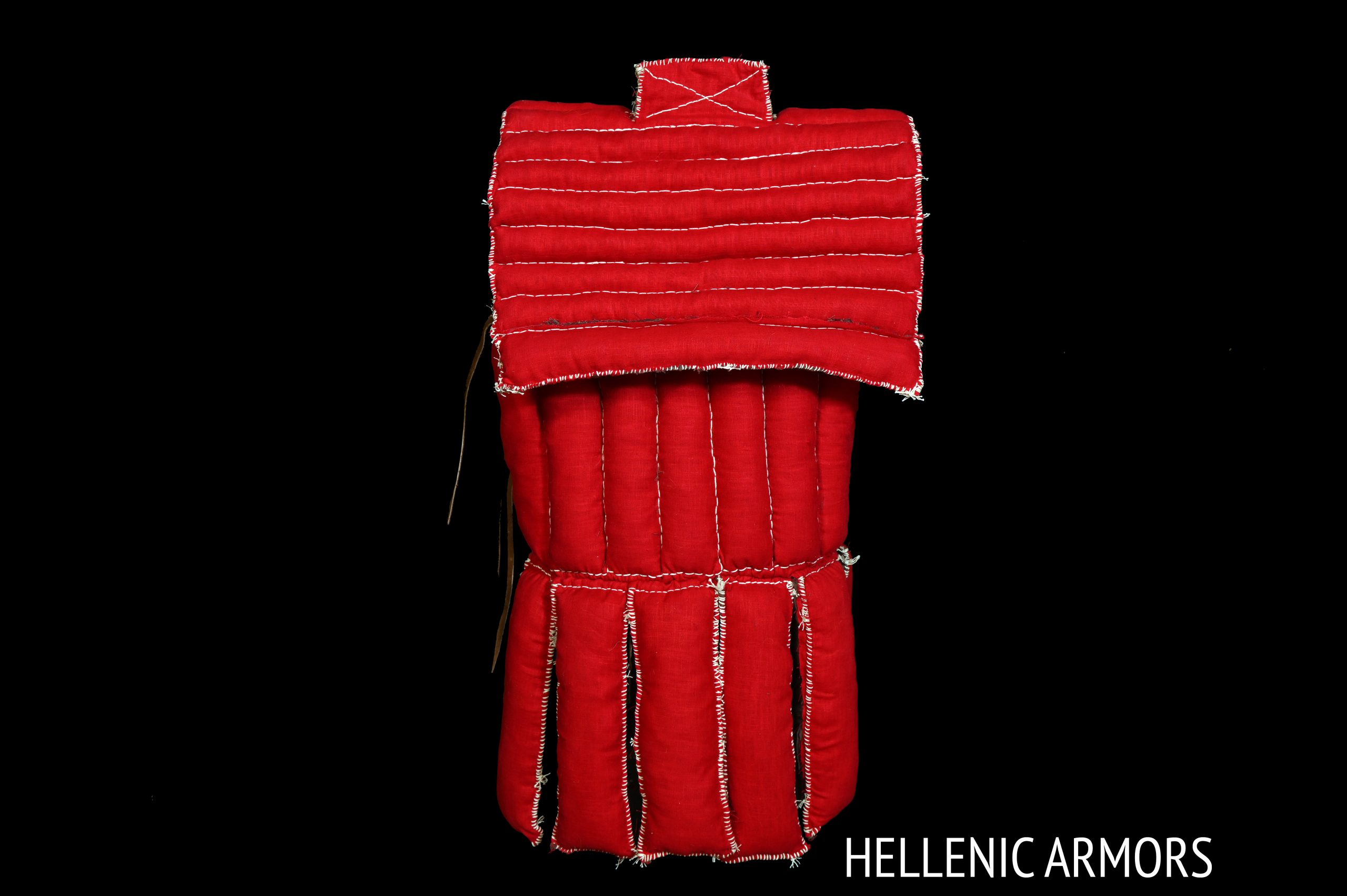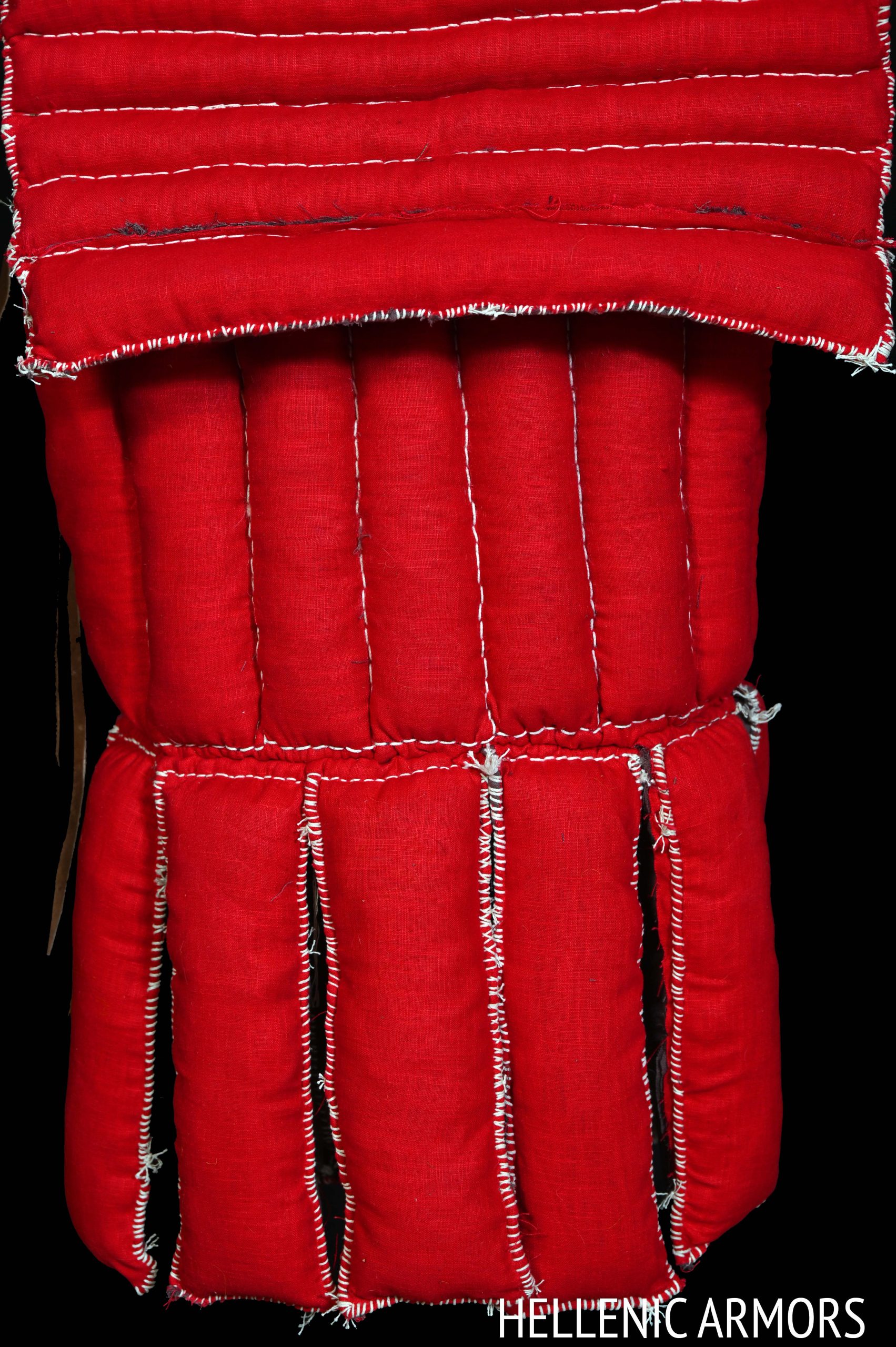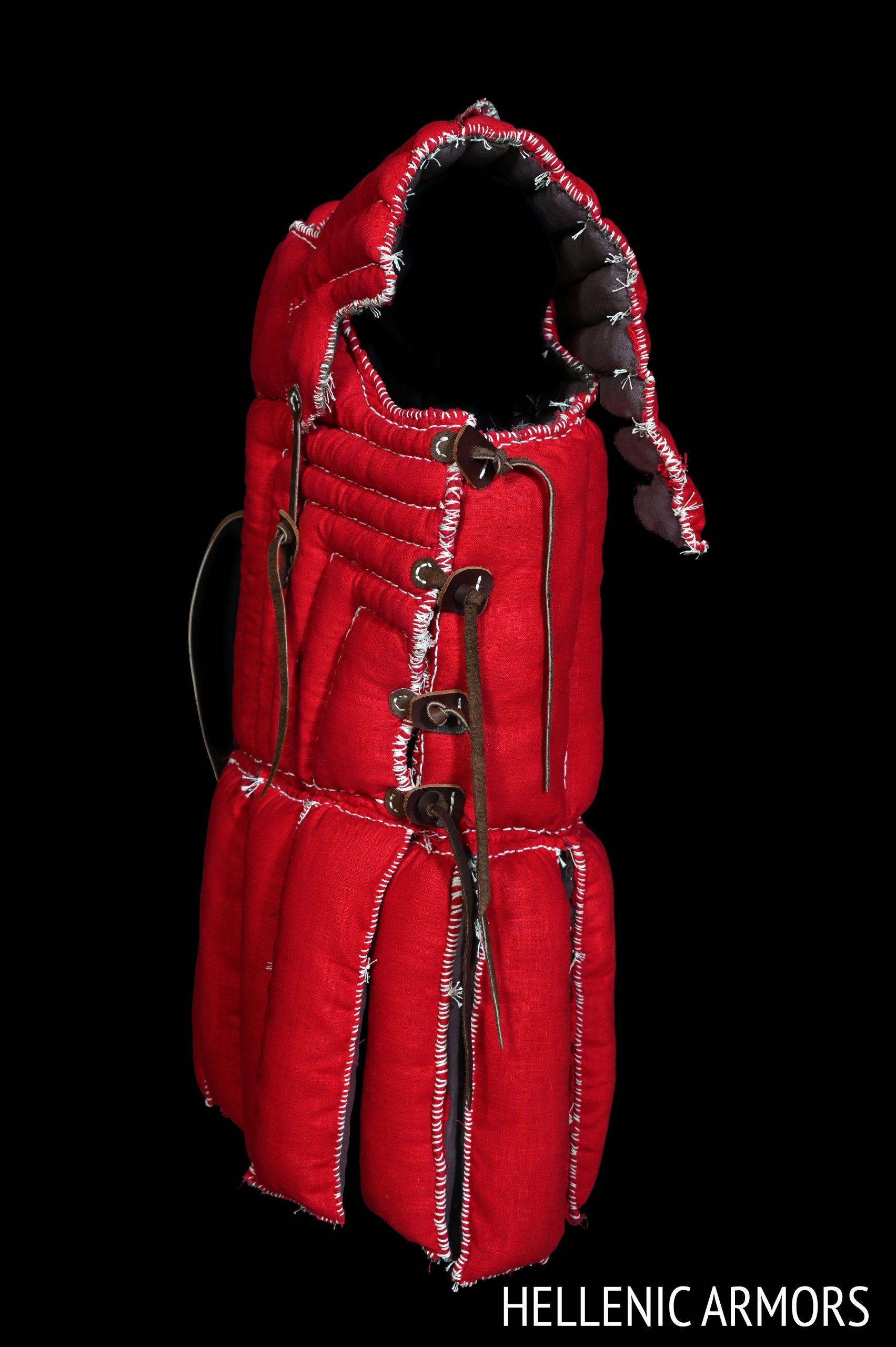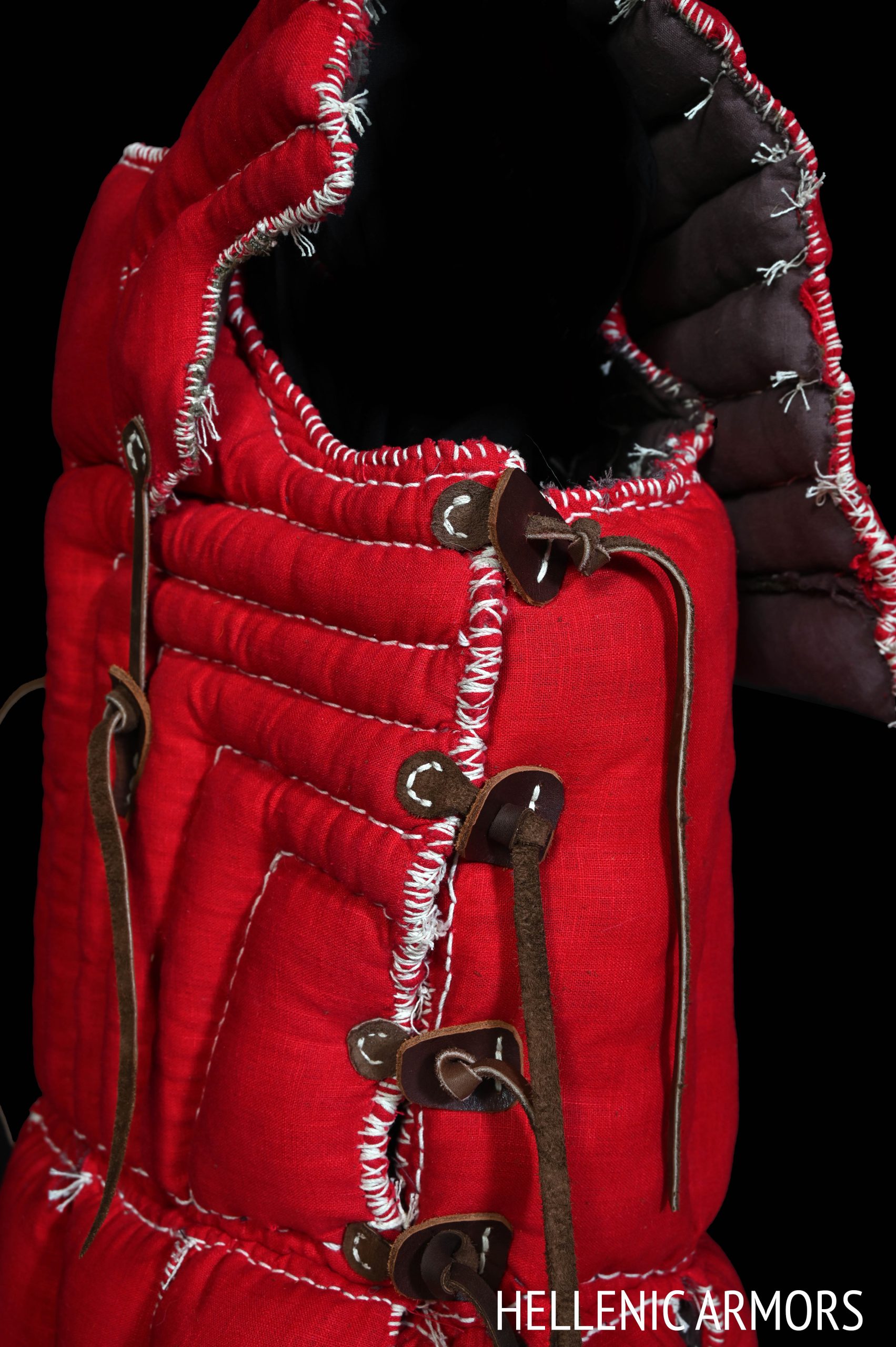Ancient Greek Armors
“Phoenician” linothorax 5th century BC
5th century BC
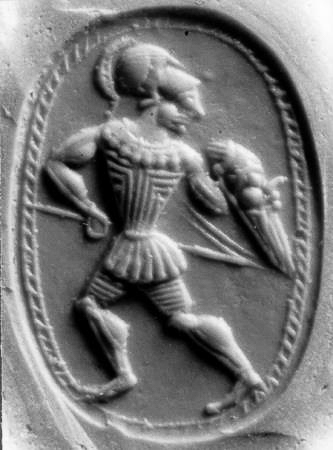
The linothorax armor has been inspired from a depiction of a stone seal found in Phoenicia (5th century BC). It represents a figure of a hoplite wearing defensive equipment of Greek typology i.e. a Corinthian Helmet of the Classical period and characteristic anatomical one piece greaves. The study of the depiction reveals that the body of the hoplite has been covered with a kind of cloth/organic device that bears elements from Greek style Linothorax armor. The same organic arrangement seems to protect the thigh areas.
Only raw organic materials, linen fabric and sheep’s wool, have been exlusively used for its reproduction. The woolen fibers have filled the special slots (“pockets”) which have formed by sewing the linen substrate forming a thick surface full of dense wool in its middle (padded constructions). This very arrangement has been experimentally proven to not only absorb the kinetic energy of arrows but also push them back.
The re making follows the basic shape of the typical linothorax consisted by three distinguished parts : shoulder protections (epomides), main torso and “pteryges” (thigh protections). Its total weight is 6 kg.
